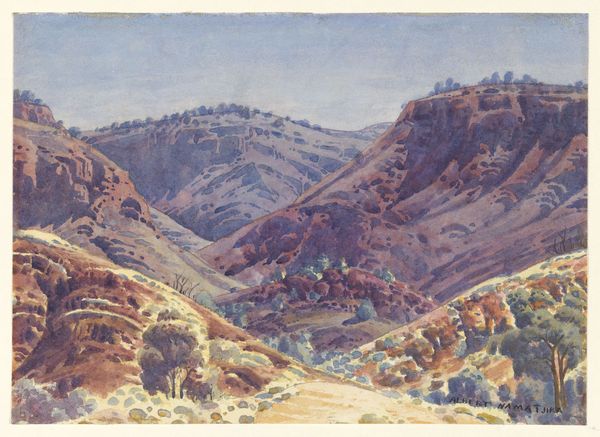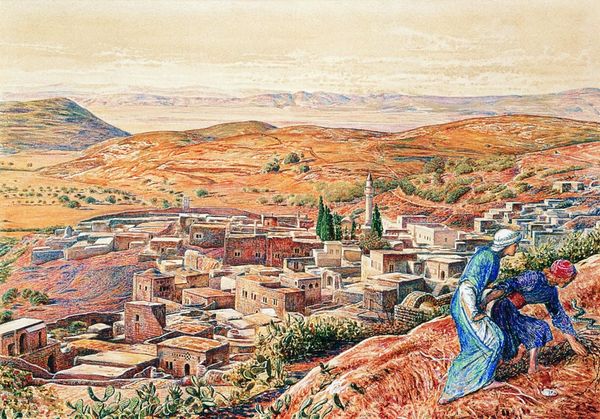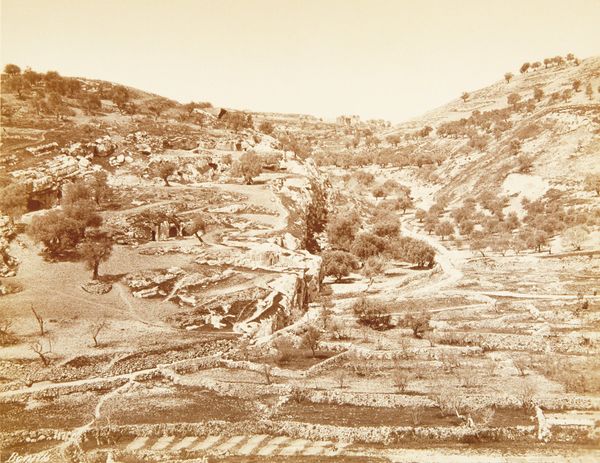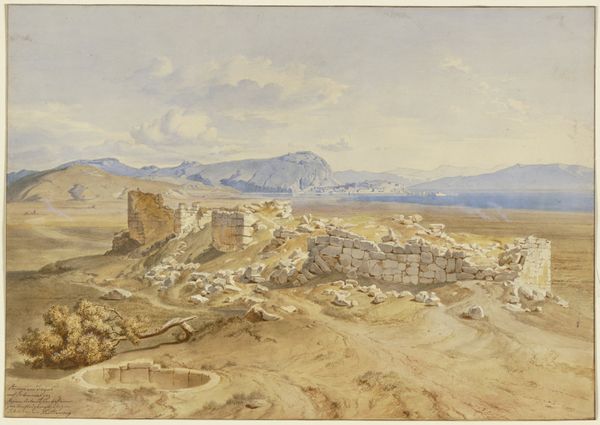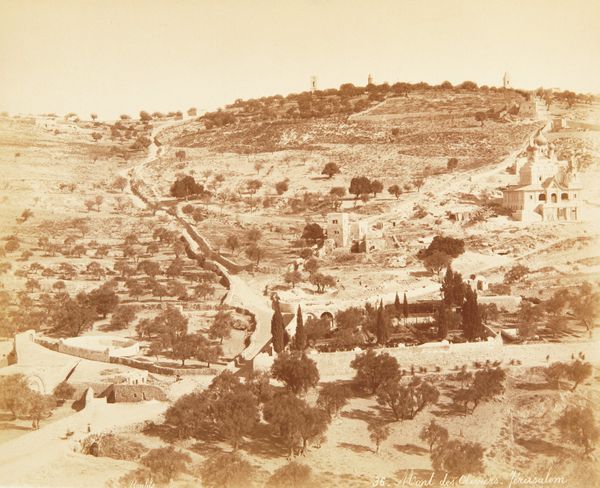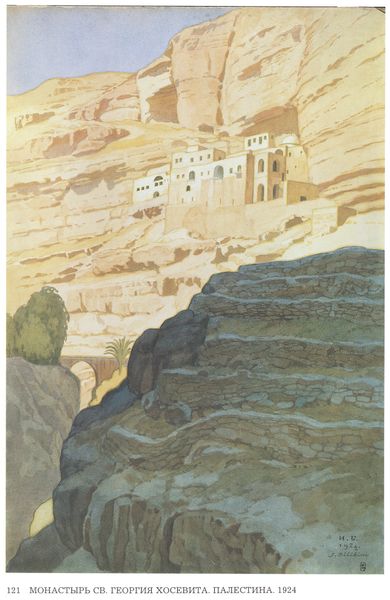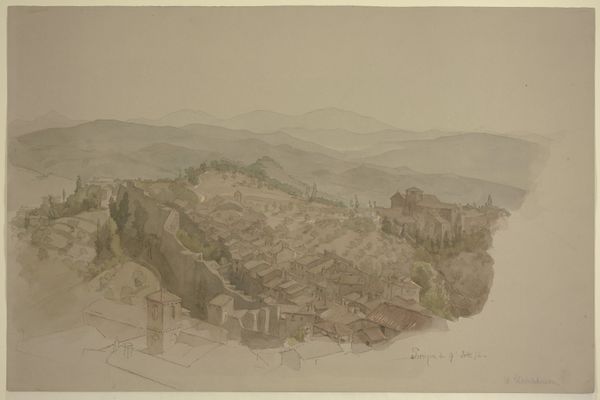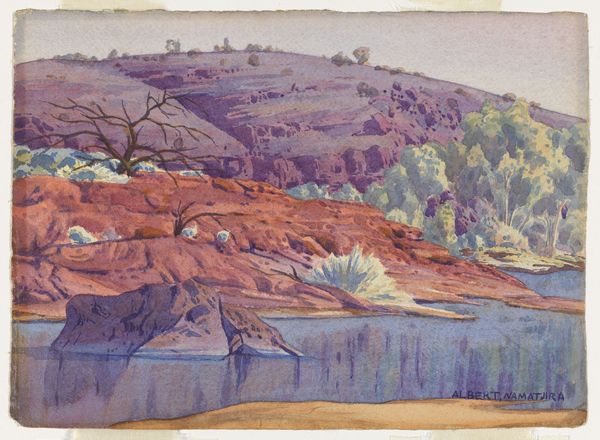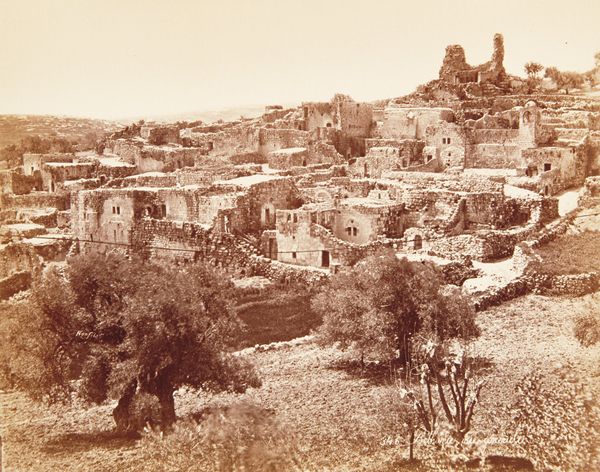
Jerusalem and the Valley of Jehoshaphat from the Hill of Evil Counsel 1854 - 1855
0:00
0:00
Dimensions: frame: 870 x 1030 x 100 mm support: 673 x 832 mm
Copyright: CC-BY-NC-ND 4.0 DEED, Photo: Tate
Editor: Here we have Thomas Seddon’s "Jerusalem and the Valley of Jehoshaphat from the Hill of Evil Counsel." It's a landscape painting that captures this really striking scene. What do you see when you look at how the image is structured? Curator: Formally, the painting displays a fascinating tension between meticulous detail and overall composition. Notice how Seddon employs a high horizon line, flattening the pictorial space. The geological formations are rendered with almost scientific precision, yet the arrangement of the hills and structures creates a dynamic rhythm. Editor: So, it’s this contrast that makes it work? Curator: Precisely. The eye is invited to traverse the landscape, guided by the careful distribution of light and shadow and yet, we are always drawn back to the surface, to the materiality of the paint itself. What does that tension evoke for you? Editor: I see what you mean about the balance! It's less about pure representation and more about the artful construction of the scene. Curator: Precisely! The painting becomes a study in how form can shape our perception of a place and time.
Comments
tatebritain 7 months ago
⋮
http://www.tate.org.uk/art/artworks/seddon-jerusalem-and-the-valley-of-jehoshaphat-from-the-hill-of-evil-counsel-n00563
Join the conversation
Join millions of artists and users on Artera today and experience the ultimate creative platform.
tatebritain 7 months ago
⋮
Seddon and his friend Holman Hunt journeyed to the Holy Land in 1854, to bring greater authenticity, spiritual and topographical, to their religious works. This view, painted south of Jerusalem, shows the Mount of Olives and the Garden of Gethsemane, the site of Christ’s anguish before the Crucifixion. The valley of Jehoshaphat was also believed to be where the Last Judgement would take place. Unlike John Martin’s apocalyptic visions, displayed nearby, Seddon represents the site in painstaking, sun-lit detail, paralleling the art critic John Ruskin’s remarks that ‘in following the steps of nature’, artists were ‘tracing the finger of God.’ Gallery label, March 2010
